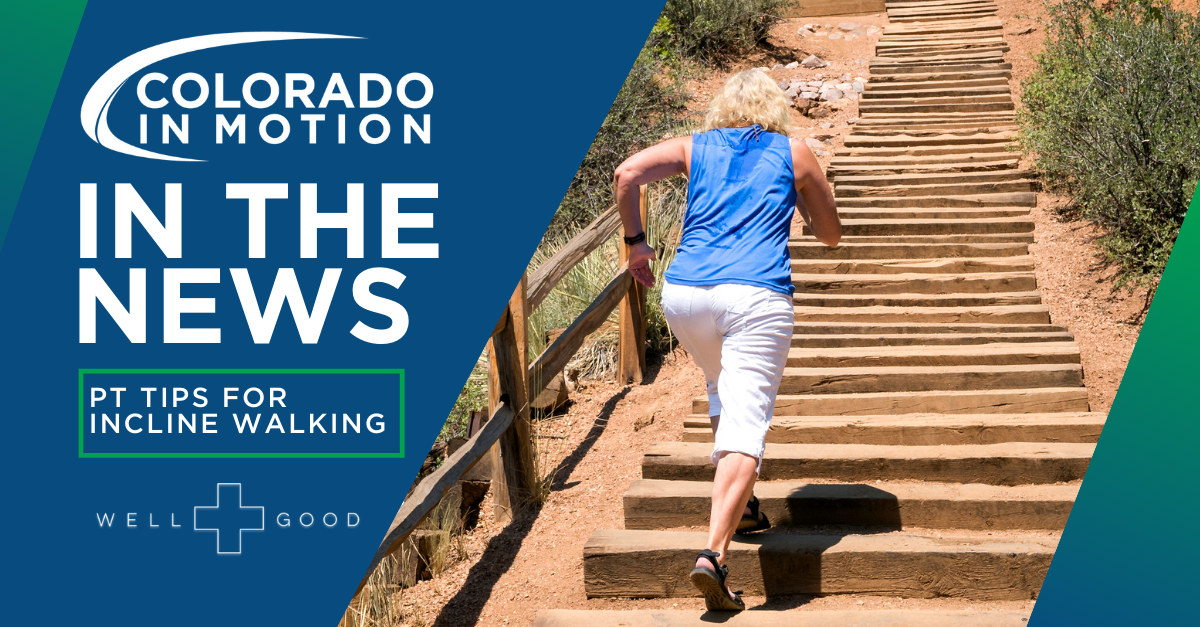When I think of the things that make me sweat the most, it’s a tie between trying stand-up comedy for the first time and 15 minutes of incline walking. Though the former could raise your heart, the latter is a really good form of cardio to try. This exercise has a lot of benefits for your heart health, joint health, and it’s sometimes a more sustainable cardio activity to stick to than, say, trying to get into running. Here’s why incline walking is good for your heart, head, your knees, and a new workout schedule.
“Incline walking is a full-body exercise. You could expect to see improvements in your exercise tolerance, improve trunk/core, and lower extremity muscular strength such as your legs, abdominal strength, and overall endurance,” says Jordan Allison, PT, DPT, cold weather athlete and ultra runner, marathoner, sports medicine expert from Colorado In Motion. Incline walking and training challenge your musculoskeletal system in new ways, the Mayo Clinic says. This can offer training benefits for people who enjoy walking or find running painful or unpleasant.
“From a musculoskeletal perspective, walking on the treadmill at an incline increases the work on your quadriceps (front of the thigh) as well as your gluteus maximus (large buttock muscle). You even get a greater stretch in your legs and increased workload on your calf muscles with the inclined position,” says Jessica McManus, PT, FAAOMPT physical therapist, and owner of Full Circle PT and Wellness. “From a cardiovascular standpoint, you will be able to increase your heart rate much higher than walking on a level surface alone, and metabolically this means you can burn more calories than walking on a level surface.”
The incline requires more of your overall muscles, which improves endurance and overall strength. “When you walk at an incline, you are recruiting more of your upper and lower muscles, increasing the demand and challenge of the activity,” says Dr. Allison. “Our systems respond to increased demand by improving their resistance to the task, which can burn more calories and increase the demand of the overall health and lung health,” he adds. Essentially you are expending more energy with less impact on your joints. Because you are burning more calories, oxygen intake increases, says Demetris W. Elia, DC. “Due to the oxidative stress at the cellular level, your body starts increasing the mitochondria production to keep up with the load,” he adds. This means that as your demand for oxygen increases, your body responds by using stored energy to support the activity.
The research is there, too
Part of the reason that incline walking is good for you is that it reduces the occurrence of knee abduction, which is the opening of the knee joint. A 2014 study published in Gait and Posture examined the stress that knee abduction poses on the cartilage in the knees and found that incline walking offered a chance to strengthen the body with less occurrence of knee joint abduction. High knee abduction was also associated with knee injuries in a 2015 study published in the British Journal of Sports Medicine. This is also why downhill walking usually causes more injuries in hikers and runners—the impact that occurs on downhill or declining terrain is three times greater than level ground’s impact.
Incline walking is also a good alternative to running
Running can be intimidating or discouraging if you don’t already have a regular cardio exercise routine. However, incline treadmill walking is beneficial for those that want a challenging exercise that they can tailor to their endurance level, says McManus. Adjusting to moderate walking paces and inclines is also easier than adjusting to a running tempo.
Incline walking can be a great alternative for individuals who experience pain while running, Dr. Allison says. This aerobic exercise delivers both strength and endurance benefits without potentially exacerbating any pain symptoms caused by running. It’s a great exercise on its own or an excellent substitute for running for people who may be recovering from injury.
Posture is extra important for incline walking
Keep in mind that, when you incline walk, you’re exerting more force at a steeper angle, so it’s important to maintain good posture to prevent injury, says Dr. Allison. The best way to ensure a healthy posture during this exercise is to start with a gentle warm-up and stretching. Stretch your hamstrings and quads as well as your neck, shoulders, and upper back. This will help you get the blood flowing to those areas and prevent injury from suddenly hiking at an incline without preparing your body.
“A good rule for posture while incline walking is to think about activating/tightening your glutes at each step, being intentional about deep breathing, and engaging your core throughout the exercise,” says Dr. Allison. “Increasing your lower body’s muscle engagement is important for strengthening endurance and overall functional mobility.” Engaging your glutes and core will support your body more evenly and leave less weight to fall on the lower back, knees, or shoulders.
Finding new ways to incorporate movement into your life is a learning process for sure. Your journey to finding the right movement for you doesn’t have to be an uphill battle—unless that sounds like a fun challenge.

